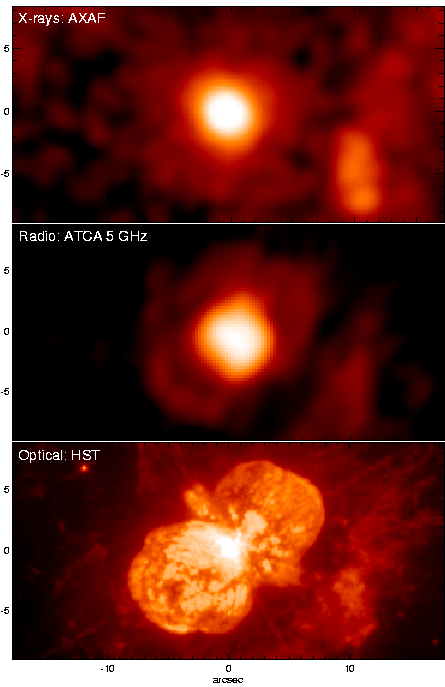
Eta Carinae is the most luminous star in our Galaxy (i.e., it puts out more energy than any other star we know of) and is therefore thought to be the heaviest star in the Galaxy, at roughly 100 times the mass of our Sun. The hot gas which was ejected in the 19th century now produces a beautiful visible nebula which surrounds the star and is known as the Homunculus nebula. This image compares the recent observation of Eta Carinae in X-rays made with the Chandra satellite (top) with a radio picture obtained at a frequency of 5 GHz (middle) and an optical image from the Hubble Sapce Telescope (lower). The bright feature at the center of the radio image is where the star is: the emission here is effectively "burnt out", and it is shown in more detail in another image.